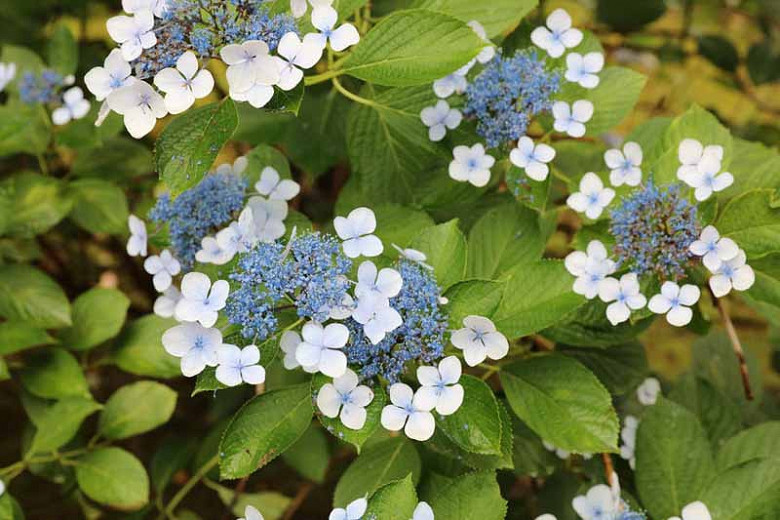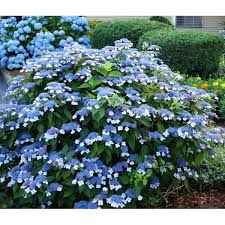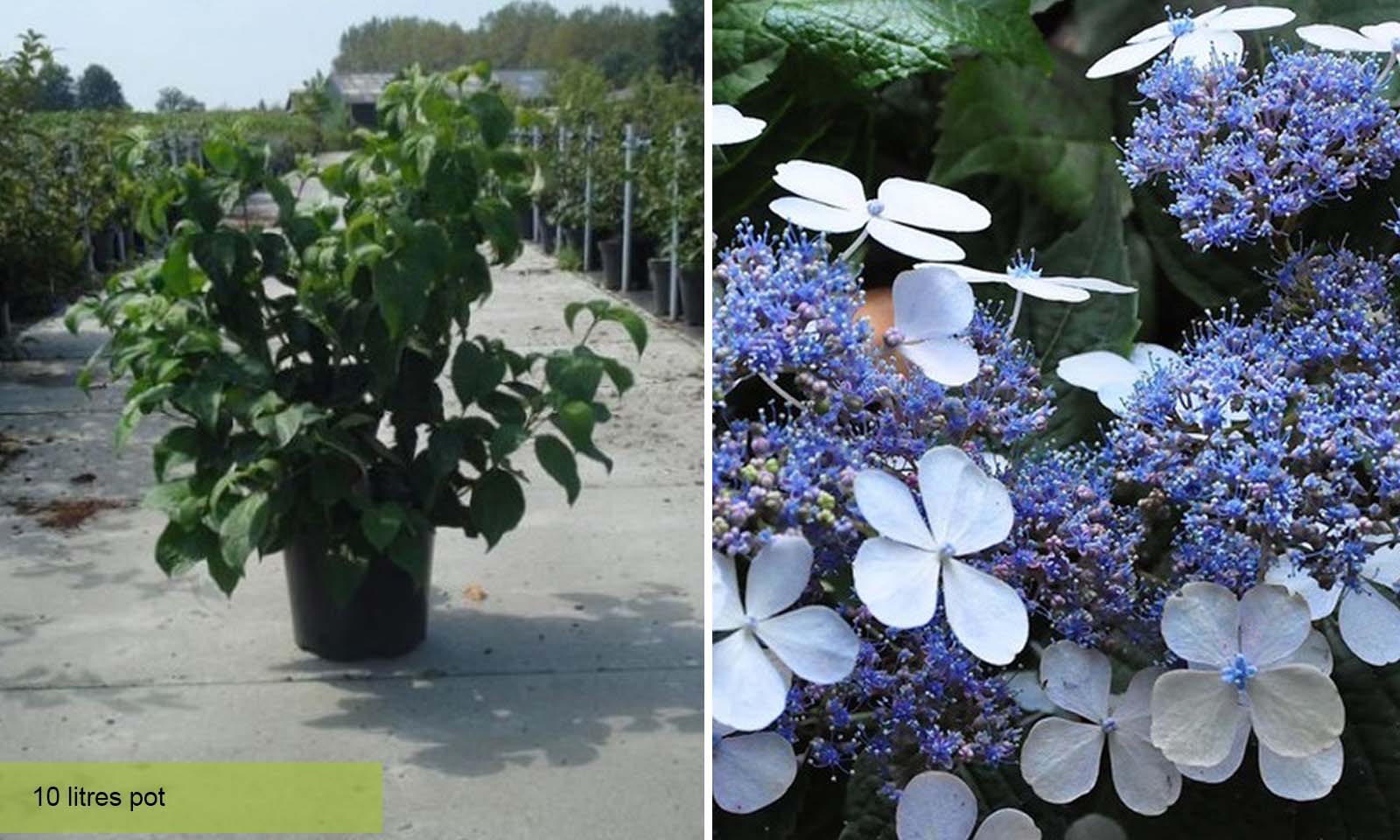The Bluebird Of Hydrangeas: A Guide To Growing And Caring For Hydrangea Serrata 'blue Bird'
The Bluebird of Hydrangeas: A Guide to Growing and Caring for Hydrangea serrata 'Blue Bird'
Hydrangea serrata 'Blue Bird' is a beautiful deciduous shrub that is native to Japan and Korea. It is known for its delicate, lacecap flowers that bloom in shades of blue, pink, or white. The flowers are borne on long, cascading stems, and they make a stunning addition to any garden.
'Blue Bird' hydrangeas are relatively easy to care for, but there are a few things you need to know in order to keep them healthy and thriving. In this blog post, we will discuss the following:
- Planting and care
- Propagation
- Pests and diseases
- Color variation
Planting and Care
'Blue Bird' hydrangeas prefer full sun or partial shade. They will tolerate full sun in cooler climates, but they will need some afternoon shade in hot, sunny areas. The soil should be rich, moist, and well-drained. If your soil is sandy, you will need to add some organic matter to improve drainage.
'Blue Bird' hydrangeas are not particularly fussy about fertilizer. A light application of a balanced fertilizer in the spring will help to promote healthy growth. You should avoid fertilizing too heavily, as this can lead to weak growth and poor flowering.
Watering is important, especially during the first year after planting. Once the plant is established, it will be more drought tolerant. However, it is still important to water regularly during hot, dry weather.
Propagation
'Blue Bird' hydrangeas can be propagated by softwood cuttings in the spring or summer. Take 4-6 inch cuttings from healthy, new growth. Remove the lower leaves from the cuttings, and dip the cut ends in rooting hormone. Plant the cuttings in a well-draining potting mix, and keep the soil moist. The cuttings should root in about 4-6 weeks.
Pests and Diseases
'Blue Bird' hydrangeas are relatively resistant to pests and diseases. However, they can be susceptible to aphids, scale, and leaf spot. If you see any pests or diseases, treat them promptly with an appropriate insecticide or fungicide.
Color Variation
The color of 'Blue Bird' hydrangeas can vary depending on the acidity of the soil. In acidic soil, the flowers will be blue. In alkaline soil, the flowers will be pink. You can adjust the acidity of the soil by adding aluminum sulfate to make the flowers blue, or by adding lime to make the flowers pink.
Conclusion
'Blue Bird' hydrangeas are a beautiful and easy-to-care-for shrub that can add a touch of elegance to any garden. With proper care, they will thrive for many years to come.
Hydrangea serrata 'Bluebird' is a beautiful deciduous shrub that is known for its delicate lacecap flowers. The flowers are typically pale pink or light blue, but the color can be changed by adjusting the pH of the soil. Hydrangea serrata 'Bluebird' is a relatively easy plant to care for, and it is a great addition to any garden.
If you are interested in learning more about Hydrangea serrata 'Bluebird', I encourage you to visit . This website has a wealth of information about the plant, including its care requirements, planting instructions, and pest and disease prevention tips.
In addition to the website, there are also many other resources available online and in libraries that can help you learn more about Hydrangea serrata 'Bluebird'. With a little research, you can be sure to find the information you need to successfully grow this beautiful plant in your own garden.
FAQ of hydrangea serrata blue bird
Q: What is Hydrangea serrata Blue Bird?
A: Hydrangea serrata Blue Bird is a deciduous shrub that is native to Japan. It is known for its beautiful blue flowers, which bloom in the summer. The plant can grow up to 4 feet tall and wide.
Q: What are the care requirements for Hydrangea serrata Blue Bird?
A: Hydrangea serrata Blue Bird is a relatively easy plant to care for. It prefers full sun to partial shade and moist, well-drained soil. The plant should be watered regularly, especially during the summer months. It is also helpful to fertilize the plant in the spring and fall.
Q: How do I get blue flowers on my Hydrangea serrata Blue Bird?
A: The color of Hydrangea serrata Blue Bird flowers is determined by the pH of the soil. In acidic soil (pH 5.5 or lower), the flowers will be blue. In neutral to alkaline soil (pH 6.5 and higher), the flowers will be pink. If you want blue flowers, you can lower the pH of your soil by adding sulfur or aluminum sulfate.
Q: What are some common pests and diseases that affect Hydrangea serrata Blue Bird?
A: The most common pests that affect Hydrangea serrata Blue Bird are aphids, scale, and Japanese beetles. The most common diseases that affect the plant are leaf spot and powdery mildew. These pests and diseases can be controlled with insecticidal soap, neem oil, or horticultural oil.
Q: How long do Hydrangea serrata Blue Bird flowers last?
A: Hydrangea serrata Blue Bird flowers typically last for about 2-3 weeks. The flowers will start to fade and wilt as the summer progresses.
Image of hydrangea serrata blue bird
5 different images of "hydrangea serrata blue bird" from Pinterest:
- A close-up of a single hydrangea serrata blue bird flower. The flower is a beautiful shade of blue, with a slightly wavy edge to the petals.

- A cluster of hydrangea serrata blue bird flowers in full bloom. The flowers are arranged in a loose cluster, with the petals cascading down.

- A hydrangea serrata blue bird plant in a garden setting. The plant is well-established, with lush green leaves and a profusion of blue flowers.

- A hydrangea serrata blue bird plant in a pot. The plant is thriving in the pot, with plenty of flowers and healthy leaves.

- A landscaped bed with hydrangea serrata blue bird plants. The plants are a beautiful addition to the landscape, with their vibrant blue flowers.

Post a Comment for "The Bluebird Of Hydrangeas: A Guide To Growing And Caring For Hydrangea Serrata 'blue Bird'"